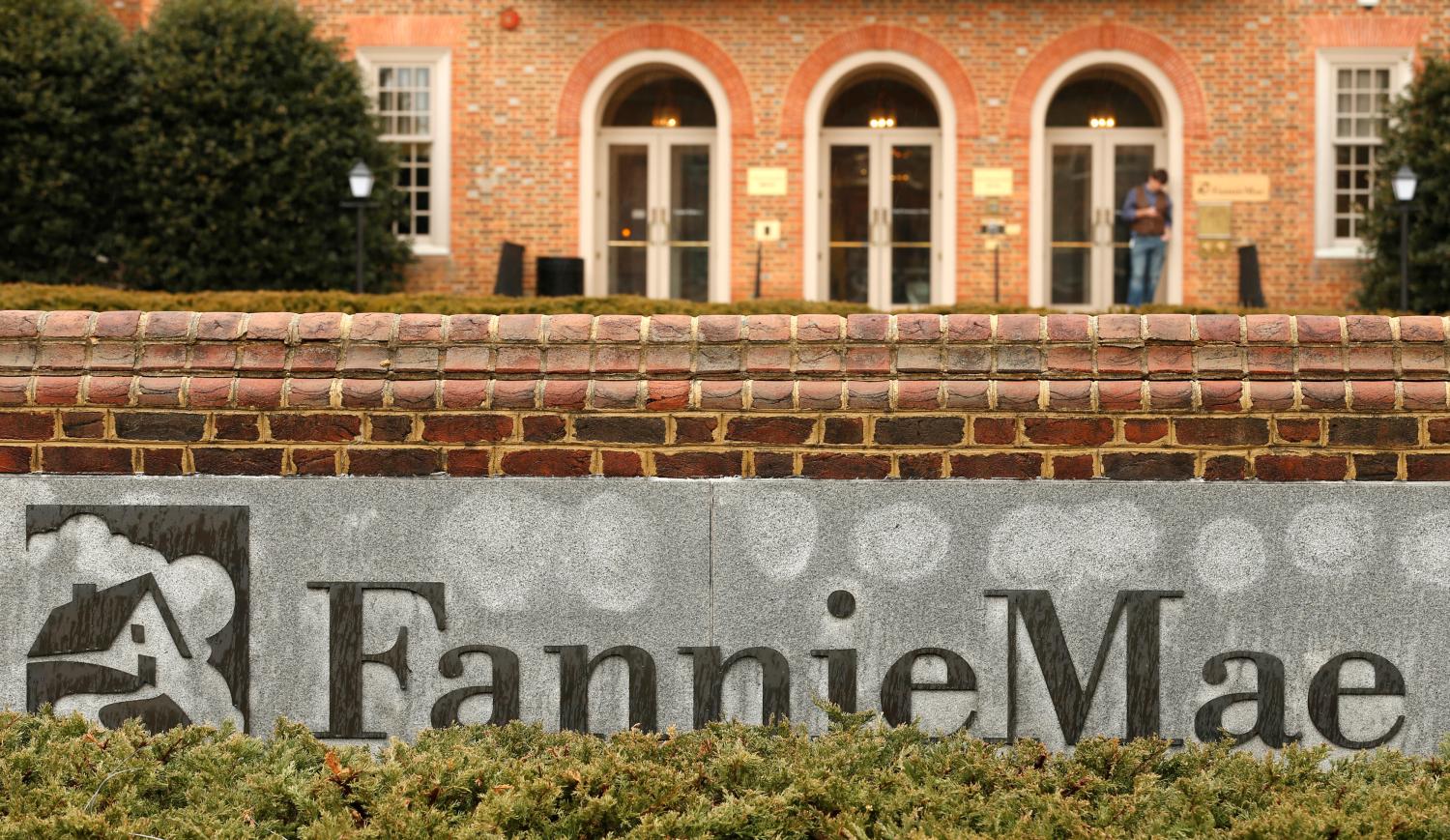Since the financial crisis, the federal government has vastly expanded its role in backing the residential mortgage market. While today’s outstanding balance of single-family mortgage debt is slightly below the 2008 peak of $11 trillion, the portion of the new home mortgages guaranteed by government sponsored enterprises (GSEs) and related federal agencies now exceeds 70 percent, as compared to approximately 35 percent in 20061.
These statistics raise important policy questions about the US government’s role in supporting the home mortgage market during normal times and in housing recessions. After the financial crisis of 2008, taxpayers have rebelled against bailing out financial firms in the mortgage market. Yet, public officials still endorse government subsidies to help achieve the social benefits of home ownership.
So, Congress is not likely to muster a bipartisan majority to pass any of the proposed legislative reforms. At one end of the spectrum, some Republicans have called for the re-privatization of the GSEs, on the assumption that the mortgage market could function without any government guarantee. At the other end of the spectrum, some Democrats want to treat GSEs as public utilities owned or regulated by the federal government.
Hence, the onus of reducing taxpayer risk, within the current mortgage market, has been left to the initiative of the GSEs. The largest initiative has been Fannie Mae’s Credit Risk Transfer (CRT) program, known as Connecticut Avenue Securities (CAS)2. The program transfers to private investors a substantial portion of the credit risk on loans backing the mortgage backed securities. It has already issued more than $30 billion of CRTs through this program—transferring risk on over $1 trillion of unpaid principal balance back to the private market.
We applaud Fannie Mae’s efforts to date, especially those to expand the investor base for CRTs by adopting a better tax structure. Nevertheless, we believe that Fannie Mae should increase the amount of credit risk it transfers to CRT investors; and the guarantee fees charged by Fannie Mae to mortgage originators should be based on the implied guarantee fee paid to CRT investors.
Here is a brief summary of CRTs, which are built on top of the existing structure for governmental securitized mortgages. After banks and brokers originate home mortgages, they sell them to Fannie Mae—which in turn packages these mortgages and offers them to investors as Mortgage Backed Securities. The credit risk on such Securities is guaranteed by Fannie Mae, so investors are protected from the risk that the mortgage borrowers might default—covering any shortfall in the principal and interest due from the mortgages underlying these Securities.3
Fannie Mae mitigates the credit risk on the loans backing its mortgage backed securities by several means. First, mortgages supported with a small down payment—less than 20 percent—are required to obtain private mortgage insurance. Such insurance is designed to make the lender whole in the event of foreclosure. Second, Fannie Mae charges mortgage originators a guarantee fee—composed of an upfront fee and monthly payment. This fee is designed to cover the potential losses of Fannie Mae on the mortgages underlying its Securities, as well as its administrative expenses and a capital cushion.
Third, over the last few years, Fannie Mae has sold CAS to investors, who absorb a significant amount of the risk of loss associated with its credit guarantee. After packaging mortgages into Mortgage Backed Securities, Fannie Mae designates some of those 30-year, fixed-rate mortgages to serve as a reference pool for the cash flows promised to investors who buy the CAS. In effect, Fannie Mae has reinsured a large part of its credit risk on such mortgages to investors.
Each CAS security is divided into several tranches in order to attract investors with different risk appetites. A simplified issuance structure is illustrated in Exhibit 1. At the bottom of the structure is a first-loss tranche of 50 basis points (bps), labeled B-2H, retained by Fannie Mae as a sort of deductible. The B-1 tranche is the most junior one sold to investors, who absorb the next 50bps of potential loss. Should losses exceed 1.0 percent of the reference pool, the M-2 tranche would absorb those losses. The same is true of the M-1 tranche if losses exceed 3.05 percent. All loses above 4.0 percent of the reference pool are still absorbed by Fannie Mae (marked tranche A-H). In addition to the two tranches it alone retains, Fannie Mae holds 5 percent of each tranche sold to investors. These 5 percent holdings helps align the interests of Fannie Mae with the investors in CAS.
 All CAS are issued with an initial maturity of 12.5 years. This is consistent with the weighted average life (WAL) of a traditional 30-year, fixed-rate mortgage, which ranges from 10 to 15 years due to pre-payments by borrowers. Prepayments are allocated to the CAS tranches in reverse order from the above allocation of losses—first to the M-1 tranche, then to the M-2 tranche and finally to the B-1 tranche. Because of normal prepayments on residential mortgages, the WAL is one to two years for M-1, five to seven years for M-2, and 10 years for the B-1 tranche.
All CAS are issued with an initial maturity of 12.5 years. This is consistent with the weighted average life (WAL) of a traditional 30-year, fixed-rate mortgage, which ranges from 10 to 15 years due to pre-payments by borrowers. Prepayments are allocated to the CAS tranches in reverse order from the above allocation of losses—first to the M-1 tranche, then to the M-2 tranche and finally to the B-1 tranche. Because of normal prepayments on residential mortgages, the WAL is one to two years for M-1, five to seven years for M-2, and 10 years for the B-1 tranche.
From 2013 through March 2018, Fannie Mae had issued $29.6 billion under the CAS program. As shown by Exhibit 2, traditional asset managers typically buy most of the senior less risky M-1 tranche, while hedge funds and private equity funds are more interested in the M-2 and B-1 tranches. Increasing the attractiveness of the B-1 tranche is especially important given its location as the junior tranche and the first in line for protecting taxpayers against losses.
 To enhance investor interest in B-1s, Fannie Mae is in process of making CAS qualify under a tax structure known as a REMIC. The largest benefit of this new structure will be better tax treatment of any distributions to the holders of the junior B-1 tranche. Because the current B1 tranche does not qualify as debt for U.S. tax purposes, income from this tranche is subject to U.S. withholding tax for non-U.S. investors. By qualifying as a REMIC, similar to most other private mortgage-backed securities, the B1 tranche will be treated as debt under US tax law so the tranche will attract more interest from non-US investors.
To enhance investor interest in B-1s, Fannie Mae is in process of making CAS qualify under a tax structure known as a REMIC. The largest benefit of this new structure will be better tax treatment of any distributions to the holders of the junior B-1 tranche. Because the current B1 tranche does not qualify as debt for U.S. tax purposes, income from this tranche is subject to U.S. withholding tax for non-U.S. investors. By qualifying as a REMIC, similar to most other private mortgage-backed securities, the B1 tranche will be treated as debt under US tax law so the tranche will attract more interest from non-US investors.
Under the new REMIC structure, all tranches of CAS should attract more interest from Real Estate Investment Trusts (REITs). To qualify as tax pass-throughs, REITs need to meet both an asset and income text. Because the current CAS are issued as notes of Fannie Mae, they qualify as government securities under the asset test. For technical reasons, however, the interest income paid by Fannie Mae on the CAS notes does not meet the income test, as derived from a real estate source. As a REMIC, by contrast, interest income on CAS is expected to meet the income test for REITs.
At the same time, Fannie Mae should encourage the development of mutual funds and exchange traded funds with concentrated positions in CRT securities. Similar to high-yield mutual funds, such funds could provide retail investors access to the yield characteristics and risk exposure offered by various tranches of CRT securities—thereby increasing the volume and liquidity for such securities.
Despite the success of CRTs to date, we believe Fannie Mae should continue to examine two key questions. First, how much risk should the firm transfer using the CAS program? One option would be to look at past losses during times of stress. According to Fannie Mae’s Data Dynamics website, the worst vintage of acquired mortgages was 2006, when Fannie Mae’s net loss as a percentage of unpaid principal balance was 3.9 percent for 30-year home mortgages4. These statistics suggest that the current transfer of up to 4 percent in losses by CRTs to private investors is sufficient to protect taxpayers—especially given the higher quality of mortgages being bought now by Fannie Mae as compared to 2006.
However, we are not convinced that barely covering past events provides adequate protection to taxpayers. Fannie Mae’s net loss was 3.9 percent during the financial crisis despite widespread federal support of the mortgage market, including prolonged suppression of interest rates by the Federal Reserve. Instead, we believe any risk transfer should include a healthy margin of safety if the default risks in the reference pools are underestimated or change adversely. In certain years, for example, Fannie Mae’s portfolio has been heavily weighted to refinanced mortgages—which have a higher net loss relative to initial mortgages. Furthermore, the Urban Institute recently reported that the percentage of mortgages accepted by Fannie Mae with a debt-to-income ratio greater than 45 percent more than doubled in 2017.5
Another option for determining the appropriate amount of credit risk for CRTs would be to look at the current capital requirements for bank holding companies. The required leverage ratio of capital to assets is 5 percent for bank holding companies. Since the GSEs are not permitted to raise capital under the current legal regime, we believe the risk transfer structure for the CAS should effectively deliver a similar ratio for Fannie Mae as the bank holding companies.
Increasing the losses absorbed by investors to 5 percent would create additional benefits. Currently, the M-1 tranche is barely rated investment grade at BBB, and evidences lower trading liquidity than similarly rated corporate boards. Moving the maximum investor losses to 5 percent would allow Fannie Mae to broaden investor interest and trading liquidity by offering CAS with higher investment grades. Exhibit 3 shows a hypothetical structure transferring 5 percent of losses to investors.
 The regulator of Fannie Mae (FHFA) is working on a capital structure proposal that it plans to release this summer. Using both a “past losses plus buffer” and comparable leverage ratio to bank holding companies, we believe the regulator should recommend that the GSEs effectively achieve a 5 percent capital cushion by transferring that amount of loss to investors through CAS and similar programs.
The regulator of Fannie Mae (FHFA) is working on a capital structure proposal that it plans to release this summer. Using both a “past losses plus buffer” and comparable leverage ratio to bank holding companies, we believe the regulator should recommend that the GSEs effectively achieve a 5 percent capital cushion by transferring that amount of loss to investors through CAS and similar programs.
Second, Fannie Mae should focus on the question – what should be the effect of CRTs on the guarantee fees charged to mortgage originators (and passed on to borrowers)? Guarantee fees charged by the GSEs to mortgage originators averaged 57bps in 2016. However, according to the most recent FHFA report, CAS issuances had an average implied guarantee fee of only 48bp in 2017. Since the FHFA now has a market mechanism to gauge the actual cost of GSE guarantees against credit defaults, it should promptly lower the guarantee fees charged by the GSEs to mortgage originators—who pass on these fees to borrowers on these home mortgages.
Moreover, the current guarantee fees charged by GSEs to mortgage originators should fall by 10 basis points in 2021. This date marks the expiration of the 10 basis point remittance by the GSEs to the U.S. Treasury mandated by the Temporary Payroll Tax cut Continuation Act of 2011.
Of course, maintaining the current guarantee fees charged to mortgage originators has benefits to the GSEs in terms of reducing their risk exposures and increasing their putative capital. But these benefits are being obtained at the expense of borrowers on home mortgages. In our view, such borrowers should not be providing subsidies through above-market guarantee fees to the GSEs, which are supposed to be promoting home ownership.
In short, although the prospects of legislative reform of the GSEs are dim, innovative officials at Fannie Mae have created CRTs, which lessen the risk for taxpayers without disrupting the government’s support of home mortgages. We applaud Fannie Mae’s efforts to expand the market for CRTs, especially by adopting a better tax structure. We encourage Fannie Mae to expand the amount of risk transferred by CRTs to investors, in order to protect taxpayers from an even worse financial crisis than 2008. Finally, the FHFA should rely on CRT pricing to lower the guarantee fees charged by GSE to mortgage originators, in order to lower the cost of home mortgages to many borrowers.
Mr. Pozen is a Senior Lecturer at MIT Sloan School of Management and a Non-Resident Fellow of the Brookings Institution. Mr. Pfannenstiel is a graduating MBA student from this same school. Robert Pozen has been a nonresident senior fellow at Brookings since 2010. In 2015, he generously committed to endow the Director’s Chair for the Urban-Brookings Tax Policy Center. Until 2010, Pozen was executive chairman of MFS Investment Management and, before 2002, served in various positions at Fidelity Investments. The authors did not receive financial support from any firm or person for this article or from any firm or person with a financial or political interest in this article. They are currently not an officer, director, or board member of any organization with an interest in this article.
-
Footnotes
- Urban Institute: https://www.urban.org/sites/default/files/publication/98216/housing_finance_at_a_glance_a_monthly_chartbook_april_2018_0.pdf
- Freddie Mac has a similar program to Fannie Mae’s CAS, called STACR. For simplicity, we will only discuss Fannie Mae’s program
- Investors in these Mortgage Backed Securities are still exposed to other risks, such as interest rate risk
- Fannie Mae Data Dynamics
- Urban Institute: https://www.urban.org/urban-wire/fannie-maes-efforts-ease-mortgage-access-show-how-hard-it-balance-risk-and-access
The Brookings Institution is committed to quality, independence, and impact.
We are supported by a diverse array of funders. In line with our values and policies, each Brookings publication represents the sole views of its author(s).







